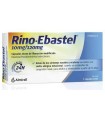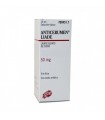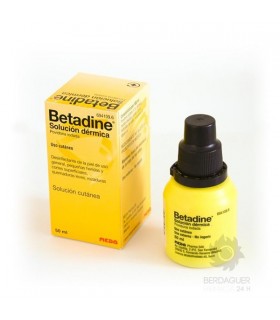Contains active substances for the relief of hemorrhoid symptoms, with anti-inflammatory activity, such as corticosteroid triamcinolone acetonido; another that acts for pain or itching, the local anesthetic lidocaine; and sodium pentosan polysulfate, which is anticoagulant and promotes the dissolution of small blood clots.
Rectal anso ointment is indicated in the symptomatic local treatment of manifestations associated with hemorrhoids, such as inflammation, pain, itching or stinging.
Anso rectal ointment is indicated in adults over 18 years of age.
1. What Anso rectal ointment is and what it is used for
It contains active principles for the relief of hemorrhoid symptoms, with anti-inflammatory activity, such as the corticosteroid triamcinolone acetonide; another that works for pain or itching, the local anesthetic lidocaine; and pentosan polysulfate sodium, which is anticoagulant and promotes the dissolution of small blood clots.
Anso rectal ointment is indicated in the symptomatic local treatment of manifestations associated with hemorrhoids, such as inflammation, pain, itching or burning.
Anso rectal ointment is indicated in adults over 18 years of age.
2. What you need to know before you use Anso rectal ointment
Do not use Anso rectal ointment:
- If you are allergic to lidocaine or other amide-type local anesthetics, to pentosan polysulfate sodium or related compounds, to triamcinolone or to any of the other ingredients of this medicine (listed in section 6).
- If you suffer from hemorrhoidal hemorrhage (bleeding hemorrhoids).
- If you have an infection in the affected area.
Warnings and cautions
Consult your doctor or pharmacist before using Anso rectal ointment.
- If the product causes irritation, you should suspend its application and consult a doctor.
- Do not apply the medicine if the area is irritated, infected or injured.
- Avoid contact with or near eyes. Wash your hands well after application.
- Do not use Anso rectal ointment in excessive doses or for prolonged periods, or with occlusive dressings or diapers (tight-fitting, poorly breathable materials), as due to increased absorption significantly increases the risk of adverse effects (see section 4).
- If you have an infection in the area to be treated, the doctor will indicate a specific treatment.
- Caution should be exercised if you are being treated with anticoagulant medications (they prevent clot formation) or non-steroidal anti-inflammatory drugs (NSAIDs, for pain and / or fever), to avoid possible bleeding, although no cases have been described with the use of Anso rectal ointment.
- Caution is recommended if this ointment is used in the elderly or patients with damaged or weakened mucosa, as they may be more sensitive to the effects of absorption of the active ingredients.
Use in athletes
Athletes are advised that this medicinal product contains a component that can establish a test result of control for doping as positive.
Children and adolescents
Anso rectal ointment should not be used in children under 18 years of age, as no studies have been performed on them.
Children are more sensitive to exogenous corticosteroid toxicity than adults and are more sensitive to the adverse effects of lidocaine.
Other medicines and Anso rectal ointment
Tell your doctor or pharmacist if you are using, have recently used or might take any other medicine.
Although unlikely, if sufficient absorption occurs, this drug may interact with antiarrhythmic (heart) medications.
Pregnancy, lactation and fertility
If you are pregnant or breast-feeding, think you might be pregnant or are planning to become pregnant, consult your doctor or pharmacist before using this medicine.
During pregnancy the use of Anso rectal ointment is not recommended and should be reserved only for cases where the potential benefit outweighs the possible risk to the fetus or newborn.
A decision must be made whether to discontinue breast-feeding or to discontinue Anso rectal ointment taking into account the benefit of breast-feeding for the child and the benefit of therapy for the mother.
Driving and using machines
Anso rectal ointment does not affect the ability to drive or use machines.
Anso rectal ointment contains cetostearyl alcohol, polyoxyethylene castor oil, butylhydroxyanisole (E320), sodium ethyl parahydroxybenzoate (E215), sodium methyl parahydroxybenzoate (E219) and propylene glycol.
This medicine can cause local skin reactions (such as contact dermatitis) because it contains cetostearyl alcohol and butylhydroxyanisole (E320), and it can also irritate the eyes and mucous membranes because it contains butylhydroxyanisole (E320).
May cause allergic reactions (possibly delayed) because it contains sodium ethyl parahydroxybenzoate (E215) and sodium methyl parahydroxybenzoate (E219).
May cause skin reactions because it contains polyoxyethylene castor oil.
May cause skin irritation because it contains propylene glycol.
3. How to use Anso rectal ointment
Follow exactly the instructions for administration of the medicine contained in this leaflet or those indicated by your doctor or pharmacist. If in doubt, ask your doctor or pharmacist.
The recommended dose is:
- Adults over 18 years:
Anal and / or rectal use
It is recommended to make the applications after the intestinal evacuation and personal hygiene.
Before applying Anso, the affected area should be cleaned with warm water and mild soap.
Dry and apply the ointment.
As a general rule, apply 1 to 3 times a day a 1-2 cm amount of ointment on the area to be treated.
You should apply the amount of ointment to the anal region with one finger, using the tip of the finger to overcome the resistance of the sphincter. Wash your hands well after use.
If the ointment is to be applied inside the rectum, screw the attached applicator onto the tube and insert the tip into the anus. Then apply a small amount of ointment by applying slight pressure to the tube.
If symptoms worsen or last more than 7 days, discontinue application and consult your doctor.
If you use more Anso rectal ointment than you should
The excessive use of topical corticosteroids (amounts higher than those recommended) can cause adverse effects (see section 4).
With excessive application of lidocaine or with an occlusive bandage or on irritated or wounded skin, it can be absorbed and reactions such as irregular heartbeat, seizures, respiratory distress may appear.
In case of overdose or accidental ingestion, immediately consult your doctor or pharmacist or call the Toxicology Information Service, Telephone 915 62 04 20, or go to a medical center indicating the medicine and the amount ingested.
If you forget to use Anso rectal ointment
Do not take a double dose to make up for a forgotten dose.
If you have any further questions on the use of this medicine, ask your doctor or pharmacist.
4. Possible side effects
Like all medicines, this medicine can cause side effects, although not everyone gets them.
The appearance of adverse effects is more likely with prolonged use or with excessive doses and with the application with occlusive materials (tight and not very breathable).
The assessment of adverse effects is based on the following frequencies:
Uncommon: may affect up to 1 in 100 people.
Rare: may affect up to 1 in 1,000 people.
Not known: frequency cannot be estimated based on the available data.
With little frequency:
Adverse reactions may appear at the application site, such as burning, itching, irritation.
Often rare:
Thinning of the skin (atrophy), small and dilated blood vessels in the skin (telangiectasia), stretch marks on the skin, acne, specific inflammation of the skin around the mouth (perioral dermatitis), redness, loss of skin color ( hypopigmentation).
Often not known:
Hypersensitivity, especially to lidocaine, with allergic reaction or anaphylactic reactions that could cause swelling under the skin, shortness of breath due to narrowing of the bronchi, inflammation of the skin, involuntary contraction of the larynx, hives, itching and shock.
Allergic contact dermatitis, dryness, maceration of the skin.
Adverse effects can occur not only in the treated area, but also in completely different areas of the body, by absorption of the active principles through the skin. For example, a condition characterized by a rounded face, obesity, accumulation of fat in the cervical area, delayed healing, etc. could occur. (Cushing's syndrome); increased blood pressure, fluid retention (edema), cataracts, hair loss.
Communication of adverse effects
If you experience any type of side effect, consult your doctor or pharmacist, even if it is about possible side effects that do not appear in this leaflet. You can also communicate them directly through the Spanish Pharmacovigilance System for Medicines for Human Use : www.notificaRAM.es . By reporting side effects you can help provide more information on the safety of this medicine.
5. How to store Anso rectal ointment
Keep this medicine out of the sight and reach of children.
Keep the tube perfectly closed.
Do not use this medicine after the expiry date which is stated on the carton after EXP. The expiration date is the last day of the month indicated.
Medicines must not be disposed of via wastewater or household waste. Deposit the containers and medicines that you do not need at the SIGRE Point of the pharmacy. If in doubt, ask your pharmacist how to dispose of medicines no longer required. This way you will help to protect the environment.
6. Package contents and additional information
Composition of Anso rectal ointment
- The active ingredients are: lidocaine hydrochloride, pentosan polysulfate sodium and triamcinolone acetonide. Each gram of ointment contains 20 mg of lidocaine hydrochloride (2%), 10 mg of pentosan polysulfate sodium (1%) and 0.1 mg of triamcinolone acetonide (0.01%).
- The other ingredients (excipients) are: cetostearyl alcohol, sodium cetostearyl sulfate, polyoxyethylene castor oil, butylhydroxyanisole (E320), citric acid (E330), macrogol cetostearyl ether, decyl oleate, sodium ethyl parahydroxybenzoate (E215 parahydroxybenzoate), sodium methyl parahydroxybenzoate (E215). sodium (E219), hexylresorcinol,, sorbitol (E420), propylene glycol, disodium edetate , thymol, hexetidine, and purified water.
What the product looks like and contents of the pack
Anso is a rectal ointment, white in color.
It is presented in tubes containing 50 g of rectal ointment. The package is provided with a cannula for rectal application when appropriate.
Holder of the marketing authorization and responsible for manufacturing
LACER , SA
C /. Sardenya, 350
08025 Barcelona (Spain)
Date of the last revision of this leaflet: September 2016.
Detailed information on this medicine is available on the website of the Spanish Agency for Medicines and Health Products (AEMPS) http://www.aemps.gob.es/





































